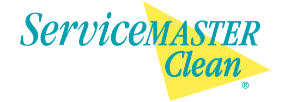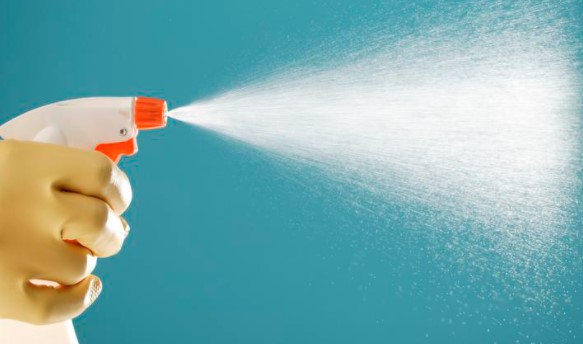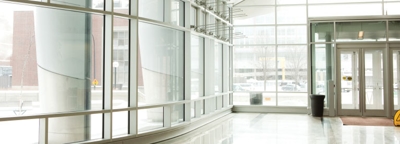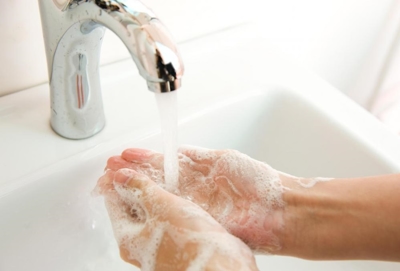What is Cross-Contamination?
The term cross-contamination is commonplace in a variety of industries, but many facility managers may be unaware of what the term entails and how it affects their business. Cross-contamination is the transfer of organisms, like bacteria and viruses, from one area to another. It’s a safety concern for everyone—not just those who work in specific industries. With the risk of cross-contamination comes the threat of facility shutdowns, food recalls, and people getting sick because of improper cleaning and sanitation procedures.
While the term is present more in the food industry, the threat of cross-contamination is present in all facilities, especially those that deal with medical services. By understanding what causes this contamination, there are preventive steps that can be taken to ensure the safety of customers, patients, and staff alike.
What Causes Cross-Contamination?
Cross-contamination is caused by several incorrectly followed safety and cleaning protocols. There are different cleaning standards based on the setting that you are working in. For instance, cross-contamination can happen in homes while cooking or cleaning. However, the stakes are higher when it’s in a food processing or healthcare capacity, as cross-contamination can affect tens to thousands of people and could lead to an outbreak that places the business at risk of being held liable.
Cross-Contamination at a Food Processing Facility
In food processing facilities, cross-contamination may happen in several different ways.
- During rapid cooling. Many food processing plants use rapid cooling as a method to prevent the growth of bacteria when the recommended protocols are followed. However, if the food is stored improperly, like a product leaking into an open container, cross-contamination occurs and can cause bacteria to grow.
- Contaminated footwear. Walking to and from different areas within the facility (and other areas outside of the clean zone) can bring in harmful bacteria. It’s important to have a sanitizing station for workers’ footwear. Make sure that employees are aware of all transition zones and when they need to sanitize.
- Improper hand washing. Handwashing must be done regularly, and handwashing stations need to be well-maintained to ensure cleanliness. The FDA Food Code’s requirements to wash hands include entering a food prep area, before putting gloves on, before preparing food, altering using the bathroom, sneezing, eating, or drinking, and more¹.
- Unsanitized food processing equipment. All food handling equipment must be thoroughly cleaned and sanitized after use using the appropriate cleaning methods and products. Bacteria and viruses can live on the surface and transfer to food, potentially causing an outbreak of foodborne illnesses.
- Direct transfer between foods. Meat dripping contaminated juices onto another food or meal. This most often occurs when uncooked meat is stored by ready-to-eat foods.
- Transfer of allergens to non-allergen food. When a food prep station isn’t properly cleaned, allergen cross-contamination can happen. Mislabeling and mishandling food products are the main cause of this.
Cross-Contamination in the Healthcare, Hospitality, and Other Industries
Cross-contamination is not limited to food processing plants. There are areas of risk in healthcare settings, schools, hotels, conferences, office buildings, and more. Each of these establishments will vary slightly when it comes to cross-contamination, including what causes it and how it may affect the public.
Situations that may lead to unintended contamination may include:
- Using a contaminated cloth on another surface. This could raise the risk of transferring dangerous pathogens to areas that normally wouldn’t be exposed to it. This is especially important in sensitive locations within medical facilities, such as operating rooms that require strict cleaning guidelines that only a professional, such as those with CSCT training, can accomplish.
- Using the right disinfectant or cleaning product. Certain industries will demand cleaning products that are made specifically for pathogens present in their environments. Using products made for less demanding environments may expose staff and customers to infection or an outbreak. An expert will be able to determine what the best cleaning product is for your unique industry while also using the appropriate methods for application, such as hands-on application.
- Using the right amount of product. Too much cleaning product can prevent the cleaning cloth from effectively latching onto germs. Changing cleaning cloths frequently, using the adequate amount of disinfectant and the right type of disinfectant can help prevent issues down the line.
- Cleaning in the correct order. Cleaning in the wrong order can lead to pathogens spreading to areas that you may have cleaned previously. It’s important to clean from top to bottom, back to front, left to right, and then cleaning floors of the room last to avoid spreading contaminated product to other parts of the surface.
Cross-contamination in a hospital can lead to devastating effects from infectious diseases transferring to different wards due to improper disinfection. Other places, like schools or offices, may not be aware of proper cleaning procedures and how to reduce the risk. By taking adequate steps to avoid cross-contamination, commercial facilities and properties can ensure they’re doing everything possible to address the potential spread of infection.
The Effects of Cross-contamination
The effects of cross-contamination can range from mild to devastating. Health issues may include:
- Food poisoning
- Bacterial infections
- Viral infections
While some may come out of these infections fine after a few days, those who are most at-risk for cross-contamination can have serious complications. Those who are most at-risk for cross-contamination complications include pregnant women, children under the age of five, adults over the age of 65, and those who are immunocompromised. This is especially true among pathogens that may be resistant to antibiotics, where the danger is even greater.
Not only can cross-contamination cause serious illness, it can also affect business revenue in a variety of ways like recalls, factory shutdowns, and serious legal issues. Liability because of improperly cleaning and disinfecting is an avoidable issue that should not affect your business. Depending on a cleaning expert for their expertise can ensure that your business takes the adequate steps to avoid an outbreak.
How to Prevent Cross-contamination
Preventing cross-contamination in your business will require specific steps to ensure that all possible efforts can be made to address the issue. This includes:
- Reduce and prevent cross-contamination by following the guidelines that are provided by either the FDA or the safety management team of your workplace. These guidelines will be specific to each industry, meaning that general cleaning methods that work for a retail store will not work for a medical facility. A cleaning expert, such as ServiceMaster Clean, will be able to determine the best steps to take and the necessary methods for application that are needed to ensure proper cleaning and disinfection.
- Add signs and infographics around your facility so that employees are made aware of what they should be doing to prevent bacteria spread. While the signs may help, additional instructions may be needed for your cleaning staff to ensure that proper procedures are followed.
- Reiterate examples of cross-contamination, how to avoid cross-contamination, and the devastating effects it can cause in meetings or workshops. Regular updates regarding how to prevent cross-contamination can help reduce the likelihood of an incident happening in your property.
Trust the Experts to Prevent Cross-contamination
It’s best to leave sanitizing and disinfecting to experts who know how to prevent the spread of bacteria, viruses, and other germs. Contact ServiceMaster Clean for cleaning professionals who can work with you to make sure your facility follows proper guidelines and help prevent an outbreak of dangerous infections due to bacteria transfer.
Whether you’re looking for COVID-19 cleaning services or general disinfection services, we’re here to ensure your property is a healthy environment for customers and employees. Find your nearest ServiceMaster Clean location or call (844) 325-0707 to get started.
Sources:
7 Unexpected Areas of Cross-Contamination in Food Processing Facilities. The Power of D7 Foam Blog. (2019, December 29). https://blog.decon7.com/blog/7-unexpected-areas-of-cross-contamination-in-food-processing-facilities.












